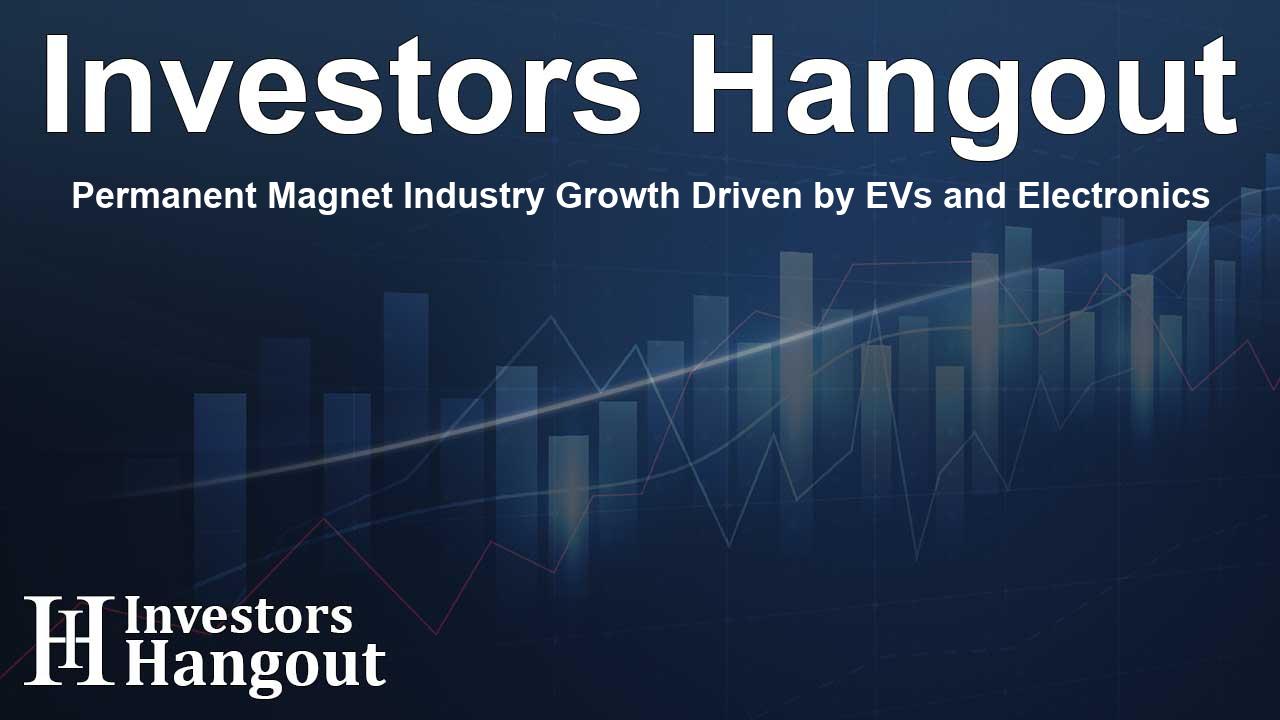Permanent Magnet Industry Growth Driven by EVs and Electronics

Exciting Developments in the Permanent Magnet Market
The global permanent magnet market is witnessing remarkable growth, driven primarily by increased demands in the consumer electronics sector and a burgeoning electric vehicle (EV) market. Recent studies highlight that this market is on track to achieve significant milestones between 2025 and 2031, with a projected growth rate of 8.5% CAGR during this period.
Key Trends Driving Market Growth
Market Expansion Overview
An in-depth analysis shows the permanent magnet market is expected to surge from approximately $24.54 billion in 2024 to an astounding $46.88 billion by 2031. This growth is influenced by advancements in technology and a pressing need for energy-efficient solutions as industries lean towards adopting innovative electric and electronic solutions.
The Role of Permanent Magnets in Consumer Electronics
Permanent magnets are integral to the functionality of numerous consumer electronic devices. Their ability to maintain magnetic properties without needing an external power source makes them ideal for a wide range of applications. Products such as smartphones, laptops, speakers, and cameras heavily rely on these magnets for their operations. In areas like air conditioning systems and audio equipment, their efficiency is enhanced through their application, making them indispensable in modern technology.
Importance in Electric Vehicles
As the automotive industry evolves, particularly with the shift towards electric vehicles, the necessity for permanent magnets is soaring. These magnets are critical in various components that enhance the performance of electric cars, including permanent magnet synchronous motors (PMSMs) and electric power steering systems. They contribute significantly to the efficiency, size, and weight of essential parts, making them a central topic of discussion in the future of EV technology.
Geographic Insights and Market Dynamics
Geographically, the Asia Pacific region is leading the way with a significant share of the market revenue. It's expected to maintain the highest growth during the forecast period, largely due to a thriving automotive sector and rising consumer electronics production. North America and Europe also play vital roles but are currently trailing behind Asia Pacific.
Understanding Market Segmentation
Types and Applications
The permanent magnet market can be categorized based on various types such as neodymium-iron-boron, ferrite, contrary to other magnet types like samarium cobalt and alnico. Among these, neodymium-iron-boron continues to dominate market share, particularly in the technology sector, where performance is paramount.
Applications further expand across industries including automotive, aerospace, medical, and industrial machinery. The consumer electronics segment notably holds the largest share of the overall market due to the increasing proliferation of electronic devices in our daily lives.
Competitive Landscape
Several key players are making waves in the permanent magnet market, including renowned names such as Hitachi Ltd and TDK Corp. Their strategies of expansion and innovation keep them at the forefront of this evolving industry. Keeping an eye on the competitive dynamics can provide helpful insights for new stakeholders or those considering investing in this space.
Conclusion: The Future of Permanent Magnets
The demand for permanent magnets is set to surge, especially given the projected growth in the global electronics manufacturing sector. With technological advancements propelling the creation of smart devices and enhancing connectivity through IoT, the requirement for effective thermal management and component reliability will only drive up the necessity for high-quality permanent magnets.
As industries capitalize on the surge in electric vehicles and electronic devices, understanding the implications and potential of permanent magnets will be essential for all stakeholders involved. The insights gleaned from the research can aid various sectors in navigating through the challenges and leveraging new opportunities in this growing market.
Frequently Asked Questions
What is driving the growth of the permanent magnet market?
The growth is primarily driven by the rising demand from consumer electronics and the electric vehicle sectors.
What types of permanent magnets are most commonly used?
Neodymium-iron-boron magnets are the most commonly utilized due to their superior performance commercially and industrially.
Which regions are leading in the permanent magnet market?
The Asia Pacific region leads in market share and projected growth rates, followed by North America and Europe.
How are permanent magnets used in electric vehicles?
In electric vehicles, permanent magnets are critical in motors, power steering systems, and other essential components for enhancing efficiency.
Who are the key players in this market?
Major players include companies like Hitachi Ltd, TDK Corp, and Arnold Magnetic Technologies, among others.
About The Author
Contact Hannah Lewis privately here. Or send an email with ATTN: Hannah Lewis as the subject to contact@investorshangout.com.
About Investors Hangout
Investors Hangout is a leading online stock forum for financial discussion and learning, offering a wide range of free tools and resources. It draws in traders of all levels, who exchange market knowledge, investigate trading tactics, and keep an eye on industry developments in real time. Featuring financial articles, stock message boards, quotes, charts, company profiles, and live news updates. Through cooperative learning and a wealth of informational resources, it helps users from novices creating their first portfolios to experts honing their techniques. Join Investors Hangout today: https://investorshangout.com/
The content of this article is based on factual, publicly available information and does not represent legal, financial, or investment advice. Investors Hangout does not offer financial advice, and the author is not a licensed financial advisor. Consult a qualified advisor before making any financial or investment decisions based on this article. This article should not be considered advice to purchase, sell, or hold any securities or other investments. If any of the material provided here is inaccurate, please contact us for corrections.
